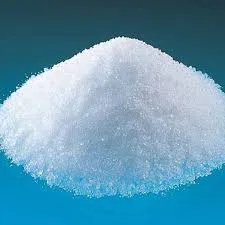Understanding HPMC for Tiles A Comprehensive Overview
Hydroxypropyl Methylcellulose (HPMC) has emerged as a critical ingredient in the construction industry, particularly in the production of tiles and tile adhesives. As a multifunctional polymer, HPMC is renowned for its thickening, binding, and film-forming properties, making it an essential additive for tile manufacturing. This article delves into the significance of HPMC in this domain, its benefits, and considerations for use in tiles.
What is HPMC?
HPMC is a semi-synthetic polymer derived from cellulose, a natural polysaccharide found in plant cell walls. It is modified through hydroxypropyl and methyl groups to enhance its solubility in water and improve its compatibility with various materials. HPMC is widely used in the construction sector due to its versatile properties that facilitate better performance of construction materials.
Benefits of HPMC in Tile Production
1. Improved Workability One of the primary advantages of HPMC is its ability to improve the workability of tile adhesives and grouts. This enhancement facilitates easier application, allowing for a smoother consistency that can be easily spread and manipulated during installation.
2. Enhanced Adhesion HPMC contributes to superior adhesion between tiles and substrates. This is crucial for ensuring the longevity of tile installations, as effective bonding reduces the risk of tiles coming loose over time, especially in high-traffic areas or environments subjected to moisture.
3. Water Retention HPMC significantly increases the water-retention capacity of tile adhesives. This property allows for extended open time during installation, giving contractors the flexibility to adjust tiles without rushing, which is vital for achieving a flawless finish. Additionally, improved water retention minimizes the risk of premature drying, which can lead to cracking and reduced strength.
hpmc for tile

4. Anti-Sagging Properties In wall applications, the incorporation of HPMC helps to prevent sagging. This characteristic is particularly beneficial when using larger tiles, which may be prone to slipping due to gravity. HPMC ensures that the adhesive maintains its position until it fully cures.
5. Rheological Control HPMC imparts excellent rheological properties to tile adhesives, allowing for the manipulation of viscosity according to specific application needs. This customizable nature enables manufacturers to tailor products for different installation methods and requirements.
Considerations for Using HPMC
While HPMC offers numerous benefits, there are important considerations to keep in mind. The selection of the appropriate HPMC grade is crucial, as different applications may require specific viscosity and solubility attributes. Manufacturers must assess factors such as environmental conditions, setting times, and tile types to determine the optimal HPMC formulation.
Moreover, the compatibility of HPMC with other components in adhesive formulations should be carefully evaluated to avoid potential adverse interactions. Certain additives might affect the performance and stability of the final product, so thorough testing is advisable.
Conclusion
HPMC has undoubtedly become an indispensable component in the tile manufacturing industry. Its numerous advantages—ranging from improved workability and enhanced adhesion to superior water retention—make it a favored choice among manufacturers and contractors alike. As the demand for high-quality tiles continues to grow, the role of HPMC is likely to expand, offering innovative solutions for diverse application challenges.
In sum, understanding the properties and benefits of HPMC is essential for anyone involved in the tile industry, whether in manufacturing, distribution, or installation. By leveraging the capabilities of HPMC, stakeholders can enhance the quality and durability of their tile products, ultimately leading to greater customer satisfaction and project success.
-
The Application and Significance of Construction RdpNewsMay.19,2025
-
Industrial Grade HpmcNewsMay.19,2025
-
Building Coating Adhesive Building Coating Adhesive HpmcNewsMay.19,2025
-
Application Of Hpmc For Detergent For Detergent In DetergentsNewsMay.19,2025
-
Application Of Hpmc Cellulose In Cement-Based MaterialsNewsMay.19,2025
-
Application Of High Quality Hpmc For Construction In The Field Of ConstructionNewsMay.19,2025




